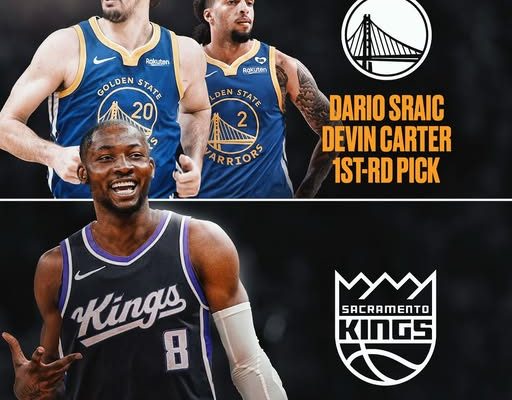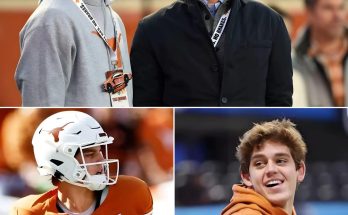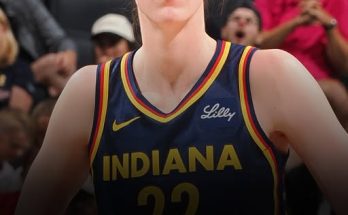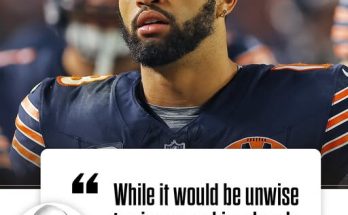The swirling currents of the NBA trade market rarely cease, and even amidst the summer lull, the ripple effects of potential deals can send seismic shifts through team rosters and fan expectations. This offseason, a particular piece of speculation, courtesy of Brett Siegel of ClutchPoints, has captured the imagination of basketball enthusiasts: a proposed trade involving the Sacramento Kings, the Golden State Warriors, and the enigmatic Jonathan Kuminga. Siegel’s report suggests the Kings are “reportedly ready to trade” Devin Carter, Dario Saric, and a protected first-round pick for Kuminga, while the Warriors, in a fascinating counter-narrative, are said to be eyeing Keegan Murray and Keon Ellis as key targets in a potential sign-and-trade scenario. This complex web of desires and assets offers a rich tapestry for analysis, allowing us to delve into the intricacies of NBA team building, the psychology of player movement, and the strategic dance between rival franchises.
To truly appreciate the nuances of this reported trade, one must first understand the context surrounding each player and team involved. Let’s begin with Jonathan Kuminga, the Golden State Warriors’ tantalizing yet sometimes frustrating talent. Kuminga, a former seventh overall pick, has consistently showcased flashes of brilliance: explosive athleticism, a burgeoning defensive versatility, and an improving offensive game. At 22 years old (as of October 2024), he possesses immense upside. However, his tenure with the Warriors has been marked by inconsistent playing time and a struggle to fully carve out a defined role within the established hierarchy of Stephen Curry, Klay Thompson, and Draymond Green. The Warriors, despite their championship pedigree, are at a crossroads. Their veteran core is aging, and the pursuit of another championship window necessitates careful management of their roster and assets. Kuminga’s restricted free agency looms large, and his reported desire for a more prominent role, potentially a starting position, has fueled the sign-and-trade discussions. The concept of a sign-and-trade is itself a fascinating aspect of the NBA’s collective bargaining agreement (CBA). It allows a team to re-sign a free agent and immediately trade him, thereby facilitating a move that might otherwise be impossible if the acquiring team is over the salary cap. For the player, it often means securing a larger, longer contract than they might find as an unrestricted free agent. For the team losing the player, it provides an opportunity to recoup assets rather than losing them for nothing. The crucial caveat, however, is that the receiving team in a sign-and-trade cannot exceed the “apron,” a designated salary level above the luxury tax threshold, after the trade is completed, and is then hard-capped for the entire season. This financial constraint significantly limits the pool of potential suitors and the types of deals that can be constructed.
On the other side of the proposed deal are the Sacramento Kings, a franchise striving to solidify its place as a playoff contender. After a breakthrough season, the Kings have faced challenges in maintaining consistency. Their core, built around De’Aaron Fox and Domantas Sabonis, requires complementary pieces that can enhance their offensive firepower and bolster their defensive shortcomings. The addition of a talent like Kuminga, with his youth and potential, could be a significant step in that direction. He could provide a much-needed athletic wing presence, capable of defending multiple positions and offering a dynamic offensive threat. The Kings’ proposed package includes Devin Carter, Dario Saric, and a protected first-round pick. Devin Carter, a first-round pick in the 2024 NBA Draft (13th overall), is a young guard with potential. He’s known for his tenacious defense and athleticism, often compared to players like Derrick White. While he didn’t see extensive minutes in his rookie season, playing just 11 minutes per game in 36 contests, he showed flashes of his defensive prowess and the potential to develop into a solid rotation player. However, the report indicates that Sacramento’s current general manager, Scott Perry, may not value Carter as highly as his predecessor, Monte McNair, did. This internal perception of a player’s value can often be a driving force in trade discussions. Dario Saric, on the other hand, is a seasoned veteran, primarily included in this hypothetical deal for salary matching purposes. Saric, who had a previous stint with the Warriors, brings floor spacing and a high basketball IQ, but his best playing days are likely behind him. His inclusion would largely be a means to make the financial aspects of the trade work under the NBA’s complex salary cap rules. The protected first-round pick is the third, and arguably most critical, component of the Kings’ offer. The value of draft picks, especially first-rounders, is paramount in the modern NBA. Protections on these picks can significantly alter their value, creating a range of scenarios from a top-five selection to a mere second-round pick in a few years’ time. For instance, a pick protected 1-4 for several years, then converting to two second-rounders, is far less valuable than a lightly protected pick that is likely to convey quickly. The specific nature of the protection on the Kings’ pick would be a crucial detail in assessing the fairness and appeal of the offer for the Warriors. The Kings, according to reports, have a considerable amount of draft capital at their disposal, with nine first-round picks, though one is tied up with protections. This gives them flexibility in trade negotiations.
Now, let’s pivot to the Warriors’ reported interest in Keegan Murray and Keon Ellis. This indicates a very different valuation of Kuminga than the Kings’ offer implies. Keegan Murray, the fourth overall pick in the 2022 Draft, has been a key piece for the Kings, showcasing his ability as a floor-spacing forward and a versatile defender. While his statistical progression didn’t explode as some might have hoped in his second season, the Kings have consistently expressed a strong desire to keep him, viewing him as a part of their long-term core. Losing Murray would be a significant blow to their future plans and seems highly unlikely unless the return is truly exceptional. His career 37.2% three-point shooting, including a rookie year where he shot over 41%, aligns perfectly with the Warriors’ offensive philosophy. Keon Ellis, an undrafted guard, has carved out a niche for himself with the Kings as a defensive specialist. He’s known for his pesky on-ball defense and high motor, often tasked with guarding opposing team’s best perimeter players. While not a high-volume scorer, his defensive prowess and low salary make him an attractive role player. The fact that the Warriors would “likely want” Murray and Ellis suggests they are aiming for players who can immediately contribute and potentially grow into larger roles, fitting within their ongoing competitive window while also planning for the future. The contrast between the Kings’ reported offer of Carter, Saric, and a protected pick, and the Warriors’ stated desire for Murray and Ellis, highlights a significant disparity in perceived value for Kuminga. The Warriors clearly believe Kuminga warrants a higher return, perhaps even a young, established starter like Murray, indicating their strong belief in Kuminga’s potential or their leverage as he is a restricted free agent.
This trade scenario, as reported by Brett Siegel, opens up several avenues for deeper analysis into the strategic considerations of both franchises. For the Kings, acquiring Kuminga would mean adding a player with star potential who could elevate their athleticism and defensive ceiling. He could provide the secondary scoring and dynamic playmaking that could ease the burden on Fox and Sabonis. His fit would likely involve him playing a significant role at the forward position, potentially even starting, fulfilling the very desire Kuminga reportedly has. However, parting with a recent lottery pick in Devin Carter, even if not fully maximized in his rookie year, signifies a commitment to winning now and a belief that Kuminga is a more immediate and impactful piece for their current timeline. The protected first-round pick is the sweetener, providing the Warriors with future draft capital, but the level of protection is key. If it’s heavily protected, its appeal diminishes significantly.
For the Golden State Warriors, this situation is a delicate balancing act. On one hand, Kuminga’s development has been uneven, and his desire for a larger role creates a potential friction point with a team still reliant on its veteran stars. Cashing in on his trade value for pieces that better align with their immediate needs or future vision could be a shrewd move. The reported interest in Keegan Murray speaks volumes about their priorities. Murray’s shooting and defensive versatility make him an ideal fit for the Warriors’ system, which emphasizes floor spacing and collective defense. He could seamlessly integrate into their wing rotation and potentially provide a long-term solution. Keon Ellis, as a defensive specialist on a team-friendly contract, also addresses a critical need for perimeter defense. However, the Kings’ reluctance to part with Murray is a major roadblock. They view him as a foundational piece, making any deal involving him a highly unlikely proposition unless the Warriors are willing to offer an overwhelming package in return, something beyond Kuminga alone. This suggests the Warriors’ reported desire for Murray might be more of a “wish list” or an attempt to drive up the asking price for Kuminga in other negotiations, rather than a truly feasible expectation from the Kings. If the Warriors cannot secure a player of Murray’s caliber, accepting an offer like the one from Sacramento involving Carter, Saric, and a protected pick would require a strong belief in Carter’s future development and a calculated risk on the value of the protected pick. It would also signify a departure from their reported preference, suggesting they are willing to compromise.
Beyond the individual players, this reported trade highlights broader trends in the NBA. The increasing emphasis on acquiring young talent with high upside, even if it means trading away established players or future draft picks, is a common theme. Teams are constantly seeking the next star, and Kuminga, despite his inconsistencies, embodies that potential. The value placed on defensive versatility, particularly on the wing, is also evident, with players like Kuminga, Murray, and Ellis all offering significant contributions on that end of the floor. Furthermore, the complexities of the CBA, particularly the sign-and-trade rules and luxury tax implications, are constantly shaping the trade landscape. Teams like the Warriors, already deep into the luxury tax, face severe penalties for exceeding certain thresholds, making every contract and trade decision incredibly impactful on their financial flexibility.
Consider also the psychological aspect of these negotiations. Kuminga’s stated desire for a larger role puts pressure on the Warriors to either accommodate him or find a suitable trade. This empowers Kuminga and his agent in the negotiation process. For the Kings, their pursuit of Kuminga signals a commitment to aggressively improve their roster and make a deeper playoff push. Their willingness to part with a recent first-round pick demonstrates their belief in Kuminga’s fit and potential impact. The public nature of these rumors, particularly through reputable reporters like Brett Siegel, also serves as a form of communication between teams, indirectly signaling intentions and desired assets. It’s a game of chess, played out in the media as much as in private negotiations.
The hypothetical nature of this report, while compelling, also warrants a degree of caution. Trade rumors, especially those detailed with specific player names and picks, can often be trial balloons, leaks designed to gauge market interest, or simply speculative scenarios that may never materialize. The “reportedly ready to trade” language suggests an offer has been made, but the “Warriors declined” indicates a current stalemate. The fact that the Warriors are eyeing Murray and Ellis is a separate, perhaps aspirational, negotiation point. It’s rare for trade talks to be so transparent, which might suggest a strategic leak from one side to apply pressure or manage public perception.
Ultimately, the potential trade of Jonathan Kuminga, whether to the Kings or another suitor, represents a pivotal moment for both the player and the Warriors franchise. For Kuminga, it’s an opportunity to land in a situation where he can fully unleash his potential and earn the consistent playing time he desires. For the Warriors, it’s a chance to re-evaluate their roster composition, address current needs, and strategically plan for the future amidst the sunset of their dynasty. The Kings, in their aggressive pursuit, are signaling their ambition and belief in Kuminga as a cornerstone for their continued rise. The interplay of young talent, veteran experience, financial constraints, and strategic team building makes this rumored trade a compelling case study in the modern NBA’s ever-evolving landscape. As the offseason progresses, the fate of Jonathan Kuminga and the ripple effects of his next destination will undoubtedly be a major storyline to watch, shaping the competitive balance of the Western Conference for years to come. The reported interest in Keegan Murray and Keon Ellis by the Warriors, though seemingly a long shot, underscores the high value placed on versatile, two-way wings in today’s league, further illuminating the underlying strategic motivations driving these high-stakes negotiations. The subtle art of NBA trade negotiations involves a delicate balance of perceived value, leverage, and future planning, all operating within the strictures of the CBA, making every proposed deal a fascinating puzzle to unpack.



